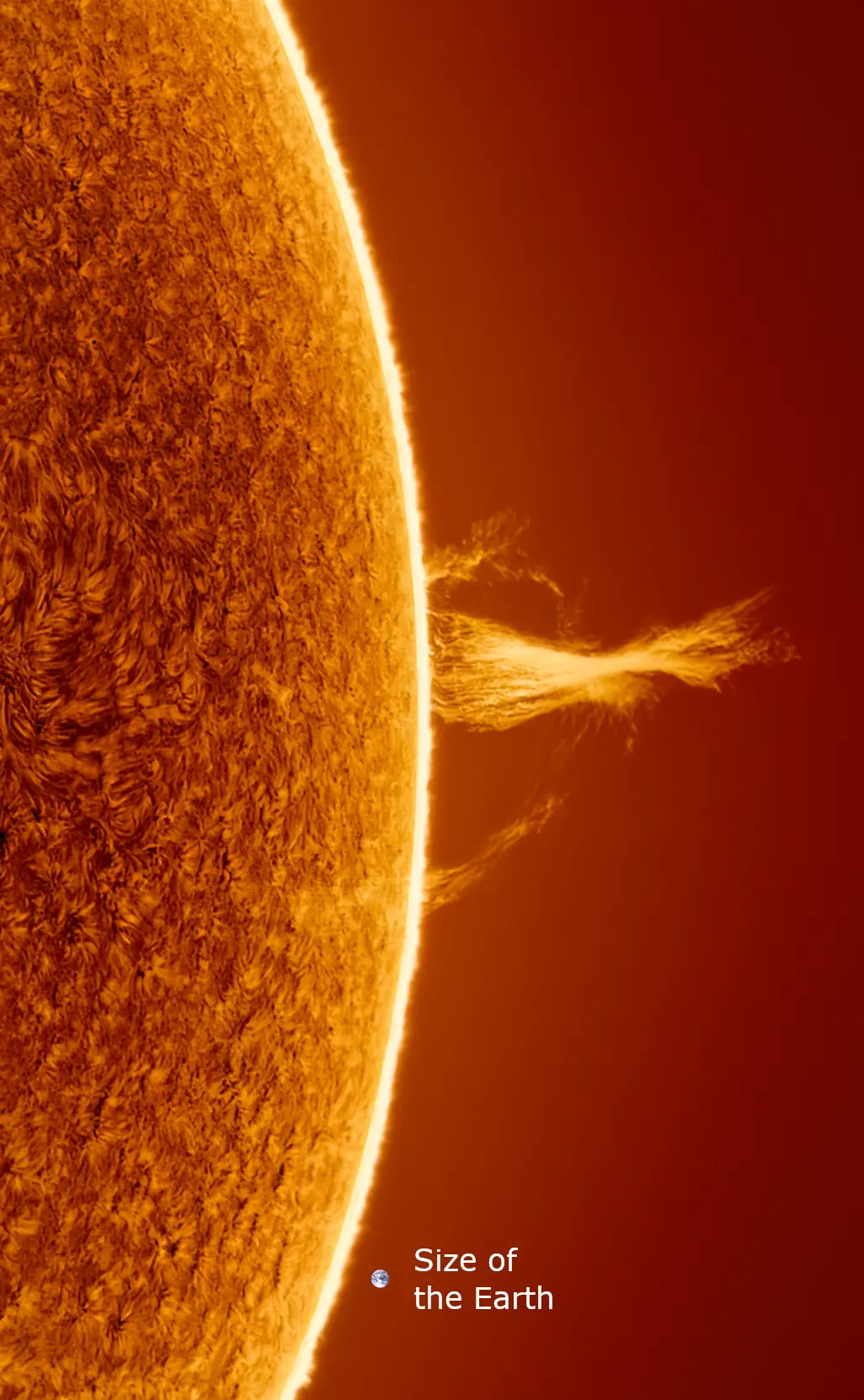A Cosmic Phenomenon with Earthly Impact
The Sun, our closest star, is a massive celestial body that fuels life on Earth with its heat and light. However, it is not just a tranquil, glowing ball in the sky; it is a seething mass of superheated plasma, undergoing continuous nuclear fusion and emitting not only light and heat but also a variety of charged particles. Sometimes, it releases an intense burst of energy and matter that travels through space, potentially affecting electronic systems and even weather patterns on Earth. These events are known as solar storms, and while they are awe-inspiring, they also pose risks that scientists and policymakers are keen to understand and mitigate.
What is a Solar Storm?
A solar storm is an eruption of energy and matter from the Sun's surface. It can consist of bursts of electromagnetic radiation (solar flares), ejections of plasma (coronal mass ejections, or CMEs), and streams of charged particles (solar wind). These phenomena often occur together but are distinct in terms of their physical properties and impact on Earth.
Types of Solar Storms
1. Solar Flares: These are sudden, localized increases in brightness that occur when magnetic energy built up in the Sun's atmosphere is released. Solar flares emit X-rays and ultraviolet radiation, which can affect Earth's upper atmosphere, impacting radio communications and GPS signals.
2. Coronal Mass Ejections (CMEs): These are massive bursts of gas and magnetic fields rising above the Sun's corona, or outer atmosphere, and being released into space. CMEs can hurl billions of tons of solar matter at speeds up to 3 million miles per hour.
3. Solar Wind: This is a continuous flow of charged particles emitted from the Sun's outer layers. While generally less impactful than flares or CMEs, intense streams of solar wind can produce disturbances as they interact with Earth's magnetic field.
The Impact on Earth
When these charged particles and magnetic fields reach Earth, they interact with our planet's magnetic field, generating electrical currents that can induce geomagnetic storms. These storms can cause various forms of disruption.
1. Technology: Solar storms can severely affect satellite systems, GPS navigation, aviation communication, and even power grids. In 1989, a powerful solar storm caused a significant blackout in Quebec, Canada, leaving millions of people without power.
2. Space Exploration: High doses of solar radiation can endanger astronauts and spacecraft that are outside Earth's protective magnetosphere.
3. Natural Phenomena: The interaction between solar particles and Earth's magnetic field results in beautiful displays of auroras, commonly known as Northern and Southern Lights. While visually stunning, these are also indicators of the significant electrical and magnetic activity going on above.
Monitoring and Preparedness
Various space agencies and observatories continuously monitor the Sun for solar storms. Satellites like NASA's Solar Dynamics Observatory (SDO) and the Solar and Heliospheric Observatory (SOHO) provide critical data that allow scientists to study these events in detail. By understanding the Sun's behavior, researchers hope to improve predictive models and early-warning systems to mitigate the impact of solar storms.
While solar storms are a natural part of the Sun's life cycle, their potential impact on our technologically dependent society cannot be understated. As we continue to invest in space exploration and increase our reliance on satellite-based technologies, understanding and preparing for solar storms becomes increasingly vital. Therefore, ongoing research and global cooperation are essential for devising strategies to protect against this awe-inspiring but potentially disruptive cosmic phenomenon.



Share:
Perihelion vs. Aphelion
Understanding the Physics of Solar Storms and Coronal Mass Ejections